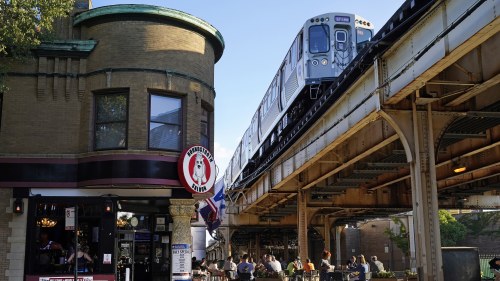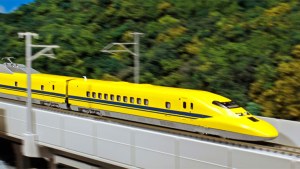The big business of small trains: Why Chicago models are so popular internationally

Chicago’s transit system has international fans, and your commuter train might be an international influencer.
When standing on a Chicago "L" platform in blustery January, it can be tough to feel fondness for the city’s commuter trains.
On top of the cold, some riders have voiced concerns about the safety and cleanliness of the transit system in recent surveys. The system is also confronting serious fiscal challenges. In an op-ed for the Chicago Sun-Times, two Illinois lawmakers wrote that the Chicago Transit Authority is facing a fast-approaching "fiscal cliff" as federal coronavirus relief funds are phased out.
But for some international tourists, the trains are the highlight of a trip to Chicago. The city’s unique transit system and rail culture has garnered a cult following that has stretched well beyond Cook County.
Subscribe to ChicagoGlobal
This story first appeared in the ChicagoGlobal newsletter, a joint project of Crain's Chicago Business and the Chicago Council on Global Affairs.
Unnarrated footage of a Brown Line train running through junctions in the Loop has racked up more than 3 million views on YouTube. And some of the most-watched videos on the platform have been published by Japanese fans of Chicago’s rail system. Game developers even published a Chicago-based train simulator in Japanese that recreated the Brown Line for the PlayStation 3, which was never released in the United States.
Japanese fandom for the CTA might be surprising to some Chicagoans; after all, Japan is home to the famous Shinkansen bullet train, which travels at speeds up to 200 mph (nearly twice as fast as the recently upgraded Amtrak train that runs between Chicago and St. Louis). Trains are a much bigger part of daily life in Japan, especially in Tokyo. Japan’s capital has the busiest commuter rail system in the world with 30 million daily commuters, according to a 2020 Deloitte report on city mobility.
But there’s a lot for international tourists and locals alike to love about Chicago’s unique rail culture.
Not only are Chicago’s elevated “L” trains an iconic and distinct symbol of the city, but Chicago is also the home to the busiest railroad hub in the United States. Major railroads from across the country meet in Chicago, providing riders service to the entire U.S. All major class I railroads for freight pass go through the Chicago region and the city is often the first or last stop for Amtrak’s national network. Outside of the dense Northeast corridor, Chicago’s Metra is the biggest commuter rail system in the U.S based on miles of track.
The big business of really small trains
A growing interest in trains is buoying Chicago-area businesses like model train manufacturer KATO USA in Schaumburg, whose parent company is based in Tokyo.
“We do a lot of Chicago-specific products,” said Vincent Pisarski, who works in marketing at KATO USA.

KATO USA's model Amtrak train, designed to resemble the Chicago region's Amtrak trains.
Some of the trains that Chicagoans are most familiar with also sell well in Japan. When the Amtrak trains that run through Chicago were redesigned, Pisarski said that KATO repackaged the American products to be sold in both markets. And while Metra products often sell best in the U.S., he says that every year there are Japanese customers who special order the Metra trains.
The same goes for model rail fans in the U.S., he said. American consumers also buy model Japanese trains, especially the ultra-fast Shinkansen. Pisarski said that the "Doctor Yellow" Shinkansen test train, named for its bright school-bus yellow paint job, is especially popular.

KATO USA's "Doctor Yellow" test train, a popular model with fans of Japan's high-speed rail system.
According to Pisarski, smaller scale model trains are most popular in Japan because people generally live in smaller spaces. Americans typically have opted for larger scale models set up on permanent displays.
While model trains may have once been associated mostly with baby boomers, Pisarski said, more Gen Zers and millennials have gotten into the hobby — especially during the most intense periods of the coronavirus pandemic, when people were looking for new ways to spend time indoors.
Because these younger consumers live in smaller spaces than older model train collectors, they are mostly interested in smaller models, Pisarski said. While boomers often joined hobby clubs or subscribed to industry magazine, the next generation of hobbyists found community online.
So while no one loves a late train or a cold platform, next time you’re standing under the space heater on the CTA Red Line or waiting on an outdoor Metra platform, think about how much international hobbyists appreciate our commuter rail system — and let that warm your heart.
It’s time 🍕🔥 https://t.co/PgtXVS5eC7 pic.twitter.com/2dyhNVHSX7
— Chicago Urbanist (@chi_urbanist) October 31, 2023
This story first appeared in the ChicagoGlobal newsletter, a joint project of Crain's Chicago Business and the Chicago Council on Global Affairs. Subscribe today.

